6 Sacred Animals That Carried the Gods — And Their Secrets
Nidhi | May 01, 2025, 18:36 IST
( Image credit : Timeslife )
In Hindu mythology, gods do not walk alone — they ride powerful animal companions called vāhanas. These sacred animals are more than divine transports; they are rich symbols of cosmic truth, spiritual insight, and human psychology. This article unveils six sacred animals that carried deities like Shiva, Vishnu, Ganesha, Durga, and others — revealing the hidden meanings, spiritual secrets, and symbolic power behind each. Dive into the deeper purpose of these mythological pairings and discover what these ancient stories still teach us today.
From the thundering skies to the silent depths of oceans, ancient myths across cultures have spoken of celestial beings riding majestic animals — creatures not merely as transport but as symbols, guardians, and extensions of divine will. Nowhere is this more vivid than in Hindu mythology, where gods and goddesses are often depicted upon their vāhanas (vehicles) — sacred animals who carry them not just physically, but spiritually, symbolically, and cosmically.
These animals are not mere props in the stories — they are charged with profound meaning, often mirroring the deity’s nature, virtues, and even contradictions. Each vāhana carries secrets — of dharma, of the universe’s order, of inner power, and of ancient ecological consciousness. Let’s uncover the deeper meanings behind six such sacred animals that carried the gods — and the secrets they whisper through time.
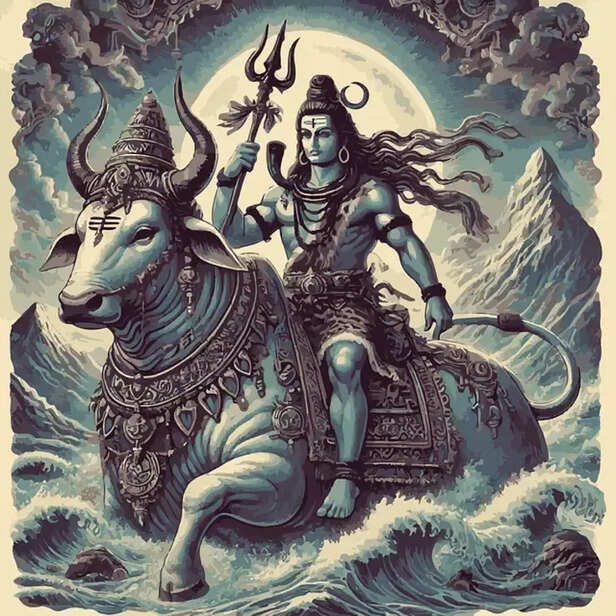
Symbol of Dharma, Power, and Patience
Nandi, the sacred bull, stands as the steadfast vāhana of Lord Shiva, the Destroyer and Transformer. But Nandi is far more than a divine steed — he is a gatekeeper, a devoted disciple, and a symbol of unshakable faith.
The bull represents dharma — the cosmic law that upholds the universe. With his unyielding strength and patient demeanor, Nandi reminds us that destruction (Shiva’s role) must be preceded by the crumbling of old structures built on adharma (unrighteousness). Nandi’s calm gaze facing the Shiva linga in every temple is an eternal message: inner strength comes from stillness, discipline, and purpose.
Secret: Nandi is often considered the first yogi, silently transmitting the wisdom of Shiva to those who listen. His stillness is not emptiness — it’s fullness contained. He teaches us that devotion is not noise; it is presence.
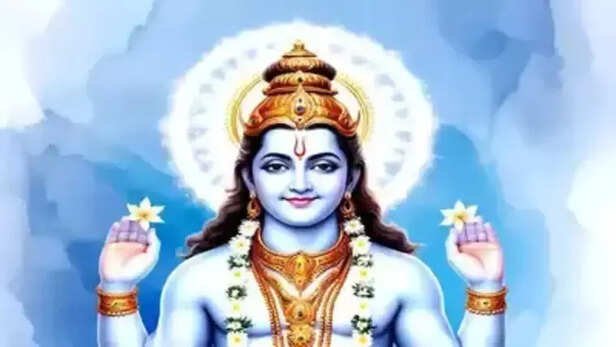
Symbol of Speed, Sovereignty, and Protection
Garuda, the mighty eagle, is not just the carrier of Lord Vishnu — he is a warrior, a protector, and an independent celestial being in his own right. Born to liberate his mother Vinata from slavery, Garuda embodies the spirit of rebellion against bondage and ignorance.
His vast wings and piercing eyes represent vision and swiftness of divine action. Garuda is invoked in ancient texts to ward off serpents — not just literal, but metaphorical ones like desire, ego, and illusion that strangle the soul. Vishnu, the Preserver, riding Garuda, conveys the idea of swift protection when dharma is under threat.
Secret: Garuda doesn’t serve Vishnu out of submission — but out of love and chosen allegiance. He reminds us that divine service does not mean surrender of strength, but alignment of it with a higher will.
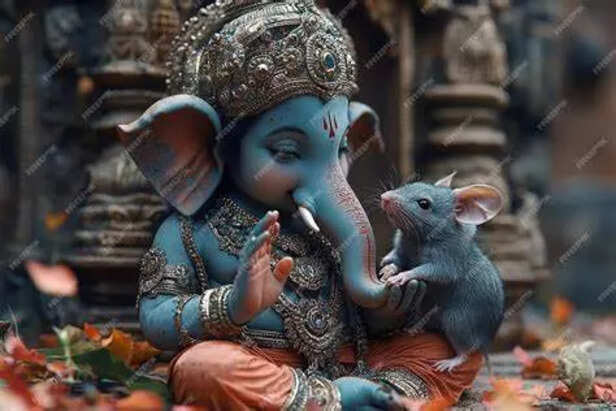
Symbol of Humility, Control, and Inner Conquest
Perhaps the most surprising of all vāhanas is the tiny mouse that carries the elephant-headed Ganesha, the remover of obstacles. Why would a being so large ride an animal so small? The answer lies in symbolic genius.
The mouse is a creature of the dark, known for slipping into tight spaces — it represents the wandering mind, curiosity, and desires that gnaw unnoticed. Ganesha riding the mouse is not absurd — it is sublime. It teaches that true wisdom doesn’t crush or ignore base instincts, but tames and rides them. The mind, like the mouse, can be destructive or divine — depending on who is in control.
Secret: Mushika whispers that even the smallest being can carry divine energy — if surrendered to wisdom. The key to unlocking obstacles lies in inner mastery, not outer might.
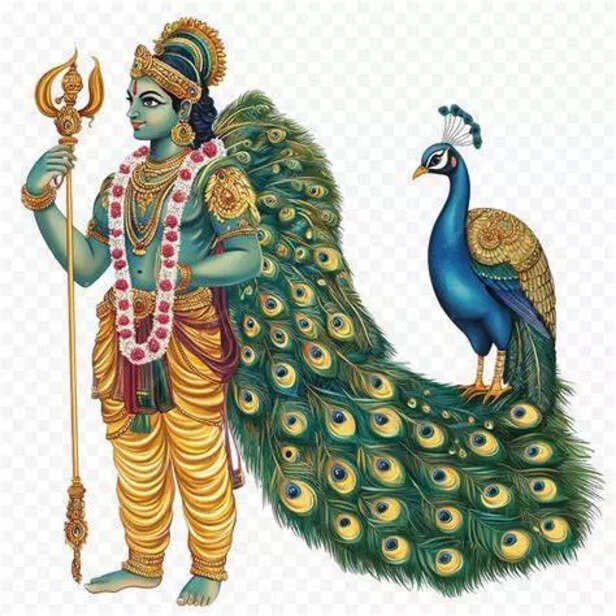
Symbol of Victory, Beauty, and Ego Transcendence
The peacock that carries Lord Kartikeya (also known as Murugan or Skanda), the god of war, is a bird of splendor, pride, and vanity. Yet, Kartikeya rides it into battle — a powerful image of ego being transformed into strength.
The peacock’s feathers shimmer with all colors but carry the mark of a thousand eyes — symbolizing awareness, vigilance, and victory over inner darkness. The bird, often associated with sensuality, becomes the steed of a god born to destroy demons — suggesting that energy is not to be repressed, but redirected.
Secret: Kartikeya’s peacock shows us that pride is not to be crushed but purified. Beauty, too, can serve the divine when it sheds vanity and becomes radiant humility.
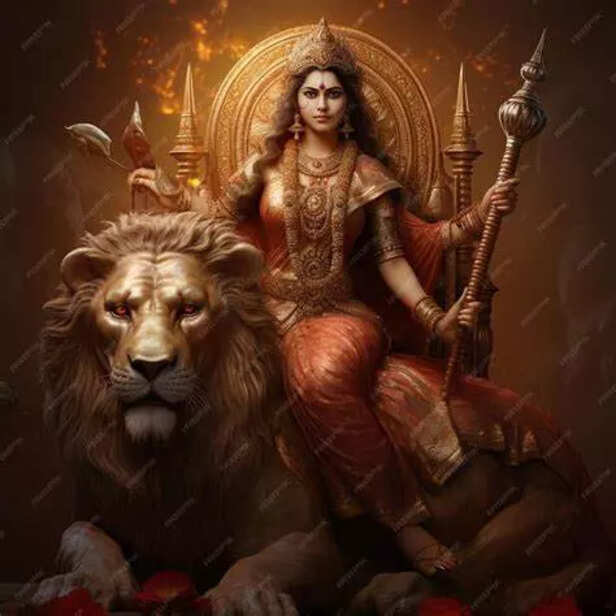
Symbol of Fierce Compassion, Courage, and Righteous Wrath
When the gods were helpless against Mahishasura, it was Goddess Durga who rose in blazing power — and she rode a lion. This beast, the king of the jungle, is not just raw power, but disciplined ferocity, channeled through the feminine divine.
The lion represents the ability to act fiercely without cruelty, to destroy without hatred. Durga’s lion shows us the power of Shakti (divine feminine energy) in its fullest form — unafraid to face chaos, yet grounded in cosmic balance.
Secret: The lion is not her slave, but her shadow — symbolizing the untamed inner forces we must ride, not repress. Durga does not kill the demon alone; she rides her own fears into battle.
Symbol of Royalty, Rain, and Cosmic Authority
Airavata, the white elephant that carries Indra, the king of gods, is born of the cosmic ocean during the churning (Samudra Manthan). With multiple trunks and dazzling skin, he is not an ordinary animal — he is a cloud-elephant, the bringer of rain and prosperity.
The elephant represents memory, wisdom, and sovereignty, and Airavata's connection with rain speaks to the life-giving and sustaining nature of divine authority. Indra, though often portrayed as flawed, rides an elephant that symbolizes what kings and leaders must aspire to: balance of power and nourishment.
Secret: Airavata is said to guard the gates of heaven — not with weapons, but with presence. True strength doesn’t shout. It rains.
These animals, sacred not because of superstition but because of the profound truths they embody, reveal to us that the divine never travels alone. Each vāhana is a metaphor for what the gods have mastered — and what we must.
Whether it is Nandi’s patience, Garuda’s speed, Mushika’s mind, the peacock’s pride, the lion’s ferocity, or the elephant’s memory — every animal carries a secret, a teaching, a doorway to wisdom.
In a time when humans are losing touch with nature, these myths whisper an old truth: animals were not below us; they were beside us — carrying gods, and perhaps even our forgotten selves.
Would you like a visual chart or diagram summarizing these six sacred animals and their meanings?
Explore the latest trends and tips in Health & Fitness, Travel, Life Hacks, Fashion & Beauty, and Relationships at Times Life!
These animals are not mere props in the stories — they are charged with profound meaning, often mirroring the deity’s nature, virtues, and even contradictions. Each vāhana carries secrets — of dharma, of the universe’s order, of inner power, and of ancient ecological consciousness. Let’s uncover the deeper meanings behind six such sacred animals that carried the gods — and the secrets they whisper through time.
1. Nandi – The Bull of Shiva

Nandi
( Image credit : Times Life Bureau )
Symbol of Dharma, Power, and Patience
Nandi, the sacred bull, stands as the steadfast vāhana of Lord Shiva, the Destroyer and Transformer. But Nandi is far more than a divine steed — he is a gatekeeper, a devoted disciple, and a symbol of unshakable faith.
The bull represents dharma — the cosmic law that upholds the universe. With his unyielding strength and patient demeanor, Nandi reminds us that destruction (Shiva’s role) must be preceded by the crumbling of old structures built on adharma (unrighteousness). Nandi’s calm gaze facing the Shiva linga in every temple is an eternal message: inner strength comes from stillness, discipline, and purpose.
Secret: Nandi is often considered the first yogi, silently transmitting the wisdom of Shiva to those who listen. His stillness is not emptiness — it’s fullness contained. He teaches us that devotion is not noise; it is presence.
2. Garuda – The Eagle of Vishnu

Garuda – The Eagle of Vishnu
( Image credit : Timeslife )
Symbol of Speed, Sovereignty, and Protection
Garuda, the mighty eagle, is not just the carrier of Lord Vishnu — he is a warrior, a protector, and an independent celestial being in his own right. Born to liberate his mother Vinata from slavery, Garuda embodies the spirit of rebellion against bondage and ignorance.
His vast wings and piercing eyes represent vision and swiftness of divine action. Garuda is invoked in ancient texts to ward off serpents — not just literal, but metaphorical ones like desire, ego, and illusion that strangle the soul. Vishnu, the Preserver, riding Garuda, conveys the idea of swift protection when dharma is under threat.
Secret: Garuda doesn’t serve Vishnu out of submission — but out of love and chosen allegiance. He reminds us that divine service does not mean surrender of strength, but alignment of it with a higher will.
3. Mushika – The Mouse of Ganesha

Mushika – The Mouse of Ganesha
( Image credit : Freepik )
Symbol of Humility, Control, and Inner Conquest
Perhaps the most surprising of all vāhanas is the tiny mouse that carries the elephant-headed Ganesha, the remover of obstacles. Why would a being so large ride an animal so small? The answer lies in symbolic genius.
The mouse is a creature of the dark, known for slipping into tight spaces — it represents the wandering mind, curiosity, and desires that gnaw unnoticed. Ganesha riding the mouse is not absurd — it is sublime. It teaches that true wisdom doesn’t crush or ignore base instincts, but tames and rides them. The mind, like the mouse, can be destructive or divine — depending on who is in control.
Secret: Mushika whispers that even the smallest being can carry divine energy — if surrendered to wisdom. The key to unlocking obstacles lies in inner mastery, not outer might.
4. Peacock – The Mount of Kartikeya

Peacock – The Mount of Kartikeya
( Image credit : Times Life Bureau )
Symbol of Victory, Beauty, and Ego Transcendence
The peacock that carries Lord Kartikeya (also known as Murugan or Skanda), the god of war, is a bird of splendor, pride, and vanity. Yet, Kartikeya rides it into battle — a powerful image of ego being transformed into strength.
The peacock’s feathers shimmer with all colors but carry the mark of a thousand eyes — symbolizing awareness, vigilance, and victory over inner darkness. The bird, often associated with sensuality, becomes the steed of a god born to destroy demons — suggesting that energy is not to be repressed, but redirected.
Secret: Kartikeya’s peacock shows us that pride is not to be crushed but purified. Beauty, too, can serve the divine when it sheds vanity and becomes radiant humility.
5. Lion – The Vehicle of Durga

Durga Maa
( Image credit : Freepik )
Symbol of Fierce Compassion, Courage, and Righteous Wrath
When the gods were helpless against Mahishasura, it was Goddess Durga who rose in blazing power — and she rode a lion. This beast, the king of the jungle, is not just raw power, but disciplined ferocity, channeled through the feminine divine.
The lion represents the ability to act fiercely without cruelty, to destroy without hatred. Durga’s lion shows us the power of Shakti (divine feminine energy) in its fullest form — unafraid to face chaos, yet grounded in cosmic balance.
Secret: The lion is not her slave, but her shadow — symbolizing the untamed inner forces we must ride, not repress. Durga does not kill the demon alone; she rides her own fears into battle.
6. Elephant – The Mount of Indra
Airavata, the white elephant that carries Indra, the king of gods, is born of the cosmic ocean during the churning (Samudra Manthan). With multiple trunks and dazzling skin, he is not an ordinary animal — he is a cloud-elephant, the bringer of rain and prosperity.
The elephant represents memory, wisdom, and sovereignty, and Airavata's connection with rain speaks to the life-giving and sustaining nature of divine authority. Indra, though often portrayed as flawed, rides an elephant that symbolizes what kings and leaders must aspire to: balance of power and nourishment.
Secret: Airavata is said to guard the gates of heaven — not with weapons, but with presence. True strength doesn’t shout. It rains.
What They Carried Was More Than the Gods
Whether it is Nandi’s patience, Garuda’s speed, Mushika’s mind, the peacock’s pride, the lion’s ferocity, or the elephant’s memory — every animal carries a secret, a teaching, a doorway to wisdom.
In a time when humans are losing touch with nature, these myths whisper an old truth: animals were not below us; they were beside us — carrying gods, and perhaps even our forgotten selves.
Would you like a visual chart or diagram summarizing these six sacred animals and their meanings?
Explore the latest trends and tips in Health & Fitness, Travel, Life Hacks, Fashion & Beauty, and Relationships at Times Life!
